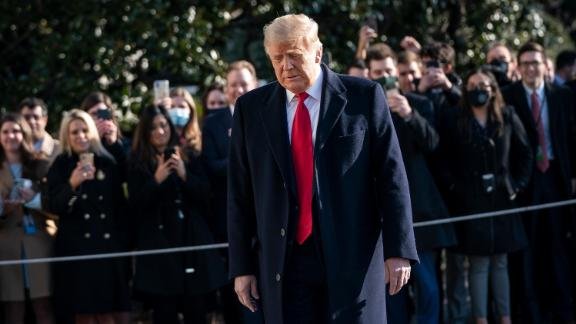Trump reportedly wants a 21-gun salute for his departure. The military honor has a fascinating history

As President Donald Trump prepares to leave Washington, D.C. for a post-presidential life in Florida, he has indicated that he wants an elaborate sendoff.
A color guard, a military band and a red carpet are among the pomp and circumstance under consideration, an administration official told CNN.
Another idea that’s being floated: a 21-gun salute.
The 21-gun salute is one of the great honors bestowed on government and military officials, fired for heads of state, on the day of a US President’s funeral and on Memorial Day.
Here’s the history behind the honor, and how it’s used today.
It originated as a gesture of peace
Gun salutes are rooted in the practices of early warriors, who would lay their weapons on the ground to honor the other party and signal that they came in peace.
As warfare evolved, the tradition gave way to the cannon salute in the 14th century, according to the US Army Center of Military History.
If a ship entering a foreign port wanted to demonstrate that it came in peace, it would fire its weapons from a safe distance — an action that would leave the incoming ship defenseless for a period of time. Because reloading was a lengthy process, the gesture was a show of respect and a lack of hostile intentions.
The incoming ship would typically fire seven times. The forts onshore, which had easier access to gunpowder, would welcome the ship by firing 21 times, three for each shot fired by the incoming ship. Though there are various hypotheses as to why those numbers were chosen — from the idea that ships on board only had seven guns to the significance of the number seven in the Bible — it’s not entirely clear.
As technology improved and warships became more robust, the ships at sea also began firing 21 times, the educational website Today I Found Out notes.
The US adopted the 21-gun salute later
By about 1730, what was once a symbolic gesture of peace had evolved into an official salute, according to the US Department of Veterans Affairs.
The British navy began using the 21-gun salute on certain occasions to honor members of the royal family. By 1808, it was adopted as the standard salute for royalty, though the US wouldn’t adopt it as its national salute until years later.
In 1810, the US declared its national salute would consist of firing one shot for each state in the union. US military installations would fire the salute on Independence Day and whenever the President visited, the Army Benefits website Military OneSource states.
But as the number of states in the union grew, the tradition became increasingly burdensome for foreign nations saluting the US and its officials. So by 1842, the US adopted the 21-gun salute as its presidential salute, the Center of Military History notes.
In 1890, the US formally declared the 21-gun salute as its national salute. It’s used today to honor the President, ex-Presidents and President-elect, as well as foreign heads of state or members of a royal family.
The 21-gun salute is fired on Memorial Day and in honor of the US flag.
Under the current tradition, 50 shots are still fired on Independence Day and after the lowering of the flag on the day a president, ex-president or president-elect is buried.
It’s not the same as the salute at military funerals
The 21-gun salute is often confused with the three rifle volley, an honor displayed at military funerals — but the two salutes are not the same.
For the three rifle volley, an honor guard typically made up of seven members will fire three shots each at a fallen veteran’s funeral. Though the result is 21 shots, those shots are fired from rifles, making that honor distinct from the 21-gun salute.
The three rifle volley comes from a battlefield custom during European dynastic wars in which both sides would pause fighting in order to remove their dead, according to Military OneSource. Once the dead had been taken care of, three volleys would be fired to signal that battle could resume.